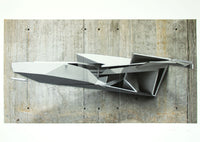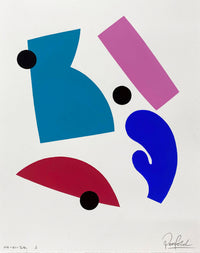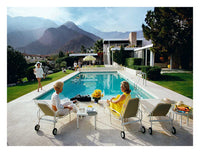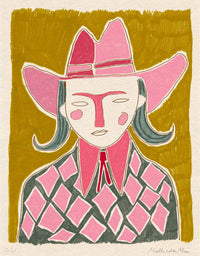Author: Imogen Aldridge
Carlos Mare is a famous figure in the New York urban art scene. The artists sculptural artworks and prints pay homage to graffiti lettering, but also draw from historical art movements. We sat down with Carlos to discuss his artistic journey, his newest print 'Mondrian Bboy Composition' and what's next for him.
AR: Where does your love of art and creation come from?
Carlos: I learned about art through Graffiti paintings on trains and walls, writing my name was the first art form I practiced and committed to as a youth. Over time as I became better at it I realised I had a talent and began considering other ways to apply it. My true love for art developed when I started visiting the museums across the street from my school, it was there where I learned about the artistic movements in the arc of history.

AR: How has your background in graffiti influenced your current work?
Carlos: Graffiti influences my current work subconsciously, some critical thinking and aesthetic gestures appear in some form, this also depends if it is sculpture, painting or drawing.
AR: What have you learnt from the graffiti scene?
Carlos: I'm still learning. The culture shape shifts with every generation, in the digital age it means something different from my generation, there are different tools and ways to connect to the culture globally. Today we teach each other painting skills online and offline, the culture thrives on itself more than ever.
AR: How does your first artwork compare to the art you are making now?
Carlos: My first artworks carry the DNA of what I do now, these elements and or energy have carried over the many years. The work has always developed upon critique of itself.
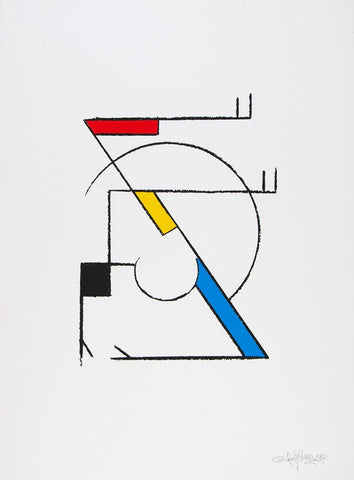
AR: Your work is heavily influenced by previous art movements, where did this love of art history come from?
Carlos: When I began writing Graffiti I wanted to absorb as much history about the writers before me, this interest in history helped me become better at my art, my style writing and it naturally carried over to my interest in overall art history. It was provocative for me, I asked a lot of questions about why artists make art and the conditions in which they make art and how relative it may be to our graffiti movement. Once I discovered how history connected itself to the overall Hip Hop history I began inheriting it in my work and art making theories.
AR: What is the strangest thing or experience that has inspired an artwork of yours?
Carlos: A graffiti sculpture inspired a very famous Award I designed. In 1988 I designed a letter I sculpture and in 2000 I was asked if I wanted to design the BET Award which is given to famous Musicians, Actors in the African American community, the award has design elements taken from the graffiti sculpture.
AR: ‘Mondrian BBoy Composition’ is your newest print, what draws you so much to Mondrian as an artist?
Carlos: Mondrian is an artist I admired from a distance for many years, I was not sure what kind of dialogue would come of my interest in his work or philosophies. When I began researching his story I was moved by his and his compatriots of the De Stijl movement. His interest in Neo-Plasticism intrigued me but not so much in this series, this series remembers him in the way of the geometric grid paintings that features primary coloured geometries.

AR: How do you know when an artwork of yours is finally finished?
Carlos: It tells me. I listen.
AR: How do your ideas originate? Are you more spontaneous or methodical?
Carlos: Usually organically, depending on materials and environment.
AR: What do you want the viewer to take away from your art? Are there any particular stories or emotions you want to convey?
Carlos: If anything my work is an ongoing dialogue with art history so if they can see the bridge and cross it there will be a lot to walk away with. As far as what it conveys and the response to it goes I leave that to the viewer.
AR: What's next for you?
Carlos: After the Bunker project in the South of France I return to London to spend studio time with Remi Rough, I will assist him on mural and then return to the US for an important showing at the Ft. Wayne Museum where Remi is co-curating an exhibition in dialogue with the American Abstract Expressionist painter from NYC in the 1950s. Having our works in relationship to theirs is an important conversation about the development of expressionistic art and art making since the 1950s. After that I go to Pittsburgh for a residency at Carrie Furnace/ Rivers of Steel, to work along side another Graffiti sculptor Micheal Walsh who introduced me to iron casting. I will be there for a period casting large scale Bboy sculptures with this enormous steel mill factory as a backdrop.
Want to see more of Carlos' artworks? Click here to take a look at his Art Republic collection page.


